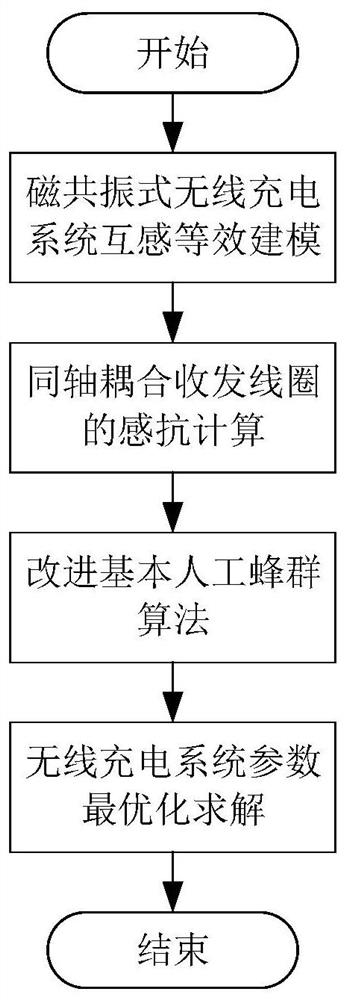Magnetic resonance type wireless charging system parameter design method based on artificial bee colony algorithm
An artificial bee colony algorithm and wireless charging technology, applied in design optimization/simulation, current collectors, electric vehicles, etc., can solve the problems of rising circuit design costs, low efficiency, and limited data.
- Summary
- Abstract
- Description
- Claims
- Application Information
AI Technical Summary
Problems solved by technology
Method used
Image
Examples
Embodiment
[0078] Parameter design method of magnetic resonance wireless charging system based on artificial bee colony algorithm, such as figure 1 shown, including the following steps:
[0079] Establish the mutual inductance equivalent circuit model of the magnetic resonance wireless charging system under different resonant topologies, and calculate the load power and transmission power of the resonant topology according to Kirchhoff's voltage law and mutual inductance theory;
[0080] This design method adopts a multi-coil structure, and the transceiver coil adopts a coaxial parallel spatial coupling relationship. By calculating the self-inductance and mutual inductance of the coaxial parallel coupled transceiver coil, the coupling coefficient of the transmitting coil and the receiving coil is obtained, and then simulated by Matlab It is obtained that the radius ratio of the transmitting and receiving coils is set to 1, so that the coupling tightness is the best;
[0081] On the basi...
PUM
 Login to View More
Login to View More Abstract
Description
Claims
Application Information
 Login to View More
Login to View More - R&D
- Intellectual Property
- Life Sciences
- Materials
- Tech Scout
- Unparalleled Data Quality
- Higher Quality Content
- 60% Fewer Hallucinations
Browse by: Latest US Patents, China's latest patents, Technical Efficacy Thesaurus, Application Domain, Technology Topic, Popular Technical Reports.
© 2025 PatSnap. All rights reserved.Legal|Privacy policy|Modern Slavery Act Transparency Statement|Sitemap|About US| Contact US: help@patsnap.com



